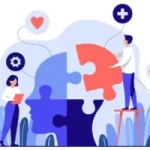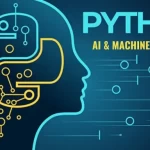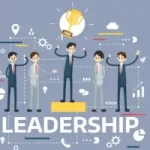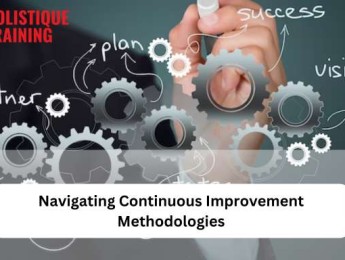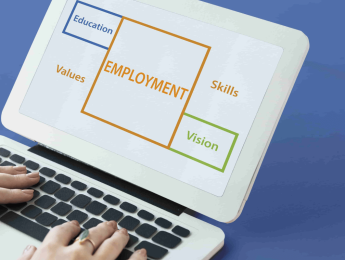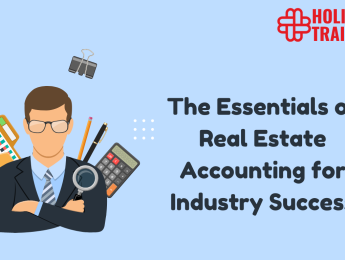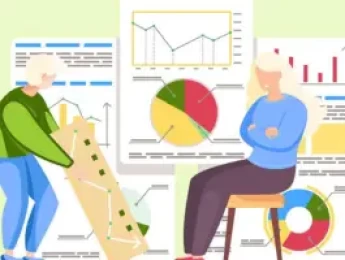- Table of Contents
- Emphasis on Employee Well-being
- Personalized Learning Experiences
- Use of AI and Machine Learning in Training
- Microlearning and Bite-Sized Content
- Gamification in HR Training
- Diversity, Equity, and Inclusion (DEI) Training
- Focus on Leadership and Management Development
- Virtual and Augmented Reality in HR Training
- Continuous Learning and Upskilling
Introduction
As we progress through 2025, the landscape of HR training continues to evolve, reflecting the dynamic nature of modern workplaces. Staying updated with the latest HR trends is crucial for organizations aiming to foster a productive and engaged workforce. In this year, HR training encompasses a broad spectrum of innovative approaches and technologies designed to enhance employee development and organizational effectiveness. From personalized learning experiences and advanced use of AI to the integration of VR/AR and a strong focus on DEI, these trends highlight the importance of adapting training strategies to meet the ever-changing needs of both employees and employers. Understanding and implementing these trends is essential for staying competitive and ensuring that HR practices align with the latest advancements in the field.
Emphasis on Employee Well-being
In 2025, a significant trend in HR training is the growing emphasis on employee well-being, as organizations recognize that a healthy, engaged workforce is critical to overall business success. This trend is driven by an increasing awareness of the importance of mental health and wellness in the workplace. Companies are investing in comprehensive mental health and wellness programs that not only address immediate concerns but also promote long-term well-being. These programs often include access to counseling services, mindfulness and stress management workshops, and health initiatives such as fitness challenges or nutritional guidance. Additionally, flexible work arrangements have become a cornerstone of well-being strategies, as they allow employees to better balance their personal and professional lives. This flexibility might include options for remote work, flexible hours, or even compressed workweeks, all designed to reduce stress and improve job satisfaction. Burnout prevention strategies are also a key focus, with HR departments training managers to recognize the signs of burnout early and to take proactive steps to mitigate it. These strategies might involve setting realistic workload expectations, encouraging regular breaks, and promoting a culture where taking time off is not only accepted but encouraged. By prioritizing employee well-being, companies can foster a more resilient, productive, and loyal workforce.
- Mental Health and Wellness Programs:
- Counseling services and support networks
- Mindfulness and stress management workshops
- Health initiatives such as fitness challenges and nutritional guidance
- Flexible Work Arrangements:
- Options for remote work or hybrid models
- Flexible hours and compressed workweeks
- Policies supporting work-life balance
- Burnout Prevention Strategies:
- Training managers to recognize and address burnout signs
- Promoting realistic workload expectations
- Encouraging regular breaks and time off
Personalized Learning Experiences
The trend towards personalized learning experiences in HR training is transforming how organizations develop their employees, making training more relevant, engaging, and effective. Adaptive learning technologies are at the forefront of this shift, leveraging artificial intelligence to tailor training content to the individual needs of each employee. These technologies assess an employee’s current skill level, learning style, and progress, adjusting the training material in real-time to ensure that each learner is challenged just the right amount. This approach not only improves knowledge retention but also keeps employees motivated by avoiding the frustration of content that is too difficult or the boredom of material that is too easy. Customized training modules further enhance personalization by allowing organizations to design training programs that align with specific business goals and individual career paths. These modules can be created to address particular skills gaps, ensuring that each employee receives the training they need to excel in their role. Employee-centric development plans are also gaining popularity, focusing on the unique career aspirations and development needs of each worker. These plans are often created in collaboration with employees, giving them a voice in their professional development and increasing their engagement and commitment to the organization. By embracing personalized learning experiences, companies can provide more effective training, foster continuous development, and ultimately create a more skilled and satisfied workforce.
- Adaptive Learning Technologies:
- AI-driven content tailored to individual needs
- Real-time adjustments to learning materials
- Enhanced engagement and knowledge retention
- Customized Training Modules:
- Training programs aligned with specific business goals
- Modules designed to close specific skills gaps
- Content tailored to individual career paths
- Employee-Centric Development Plans:
- Focus on unique career aspirations
- Collaborative development of personalized training plans
- Increased employee engagement and commitment
Use of AI and Machine Learning in Training
The integration of AI and machine learning into HR training is revolutionizing how organizations approach employee development, making it more efficient, personalized, and data-driven. One of the most impactful applications of these technologies is the use of predictive analytics to identify training needs. By analyzing large datasets, AI can predict which skills will be most valuable in the future and identify which employees need training in those areas. This proactive approach ensures that the workforce is always equipped with the skills necessary to meet emerging business challenges. AI-driven content delivery further enhances the training process by tailoring learning experiences to individual employees. Through machine learning algorithms, content can be dynamically adjusted based on the learner’s progress, preferences, and performance, ensuring that each employee receives the most relevant and effective training possible. Additionally, chatbots and virtual assistants are becoming indispensable tools in HR support, providing instant access to information and resources. These AI-powered assistants can answer common questions, guide employees through training modules, and even offer personalized learning recommendations, all without the need for human intervention. By harnessing the power of AI and machine learning, companies can deliver smarter, more targeted training programs that maximize the potential of their workforce.
- Predictive Analytics for Training Needs:
- Identification of future skill requirements
- Proactive training to close skill gaps
- Data-driven decision-making in workforce development
- AI-Driven Content Delivery:
- Personalized learning experiences
- Dynamic content adjustments based on learner progress
- Enhanced relevance and effectiveness of training
- Chatbots and Virtual Assistants for HR Support:
- Instant access to training resources and information
- Personalized learning recommendations
- Reduced reliance on human HR staff for routine queries
Microlearning and Bite-Sized Content
The rise of microlearning and bite-sized content is transforming HR training by making learning more accessible, efficient, and aligned with the fast-paced nature of modern work environments. This approach involves delivering short, focused learning modules that allow employees to quickly grasp key concepts without overwhelming them with information. These modules typically range from just a few minutes to under an hour, making it easier for employees to fit training into their busy schedules. The brevity of these sessions enhances retention by focusing on one topic or skill at a time, allowing employees to immediately apply what they’ve learned to their work. Mobile-friendly training resources are a crucial component of microlearning, enabling employees to access training materials anytime and anywhere. Whether they’re on a break, commuting, or at home, employees can engage with bite-sized lessons on their smartphones or tablets, making learning more convenient and continuous. On-the-go learning solutions complement this by providing employees with the flexibility to learn in various environments, whether online or offline. These solutions often include downloadable content, podcasts, or apps that allow for learning in short bursts, catering to the needs of today’s dynamic workforce. By adopting microlearning and bite-sized content, organizations can create a more flexible and engaging learning experience that supports ongoing development without disrupting daily work routines.
- Short, Focused Learning Modules:
- Quick sessions that enhance understanding and retention
- Focus on single topics or skills for immediate application
- Efficient learning that fits into busy schedules
- Mobile-Friendly Training Resources:
- Access to training materials anytime, anywhere
- Optimized for smartphones and tablets
- Continuous learning on-the-go
- On-the-Go Learning Solutions:
- Flexible learning in various environments
- Offline access through downloadable content and apps
- Learning in short, manageable bursts
Gamification in HR Training
Gamification is increasingly becoming a key trend in HR training, as it transforms traditional learning methods into more engaging, interactive experiences by incorporating game elements. This approach leverages the innate human love for competition and rewards to make training more enjoyable and effective. By integrating elements like points, badges, leaderboards, and challenges into training programs, employees are motivated to actively participate and complete their learning objectives. Engaging training through game elements not only boosts participation rates but also enhances knowledge retention, as employees are more likely to remember what they’ve learned when they’re actively involved in the process. Competitions and rewards systems further amplify this engagement by creating a sense of achievement and healthy competition among employees. For instance, organizations might implement training programs where employees can earn points for completing modules, which can then be exchanged for tangible rewards or recognition within the company. This not only fosters a competitive spirit but also encourages continuous learning and improvement. Case studies of successful gamification in HR training provide valuable insights into how companies have effectively used these techniques to improve employee engagement and learning outcomes. By studying these examples, organizations can tailor gamification strategies to suit their specific training needs, ensuring that learning is not only effective but also enjoyable for employees.
- Engaging Training Through Game Elements:
- Integration of points, badges, and leaderboards
- Interactive challenges that boost participation
- Enhanced knowledge retention through active involvement
- Competitions and Rewards Systems:
- Motivation through points and badges
- Tangible rewards and recognition for achievements
- Encouragement of continuous learning and improvement
- Case Studies of Successful Gamification:
- Real-world examples of effective gamification
- Insights into best practices for implementing game elements
- Tailored strategies for different organizational needs
Diversity, Equity, and Inclusion (DEI) Training
Diversity, Equity, and Inclusion (DEI) training has become a critical component of HR strategies as organizations increasingly recognize the importance of fostering a workplace that values and respects all employees. Integrating DEI into corporate culture is essential for creating an environment where every individual feels valued and included. This involves embedding DEI principles into every aspect of the organization, from recruitment and hiring practices to team collaboration and leadership development. By making DEI a core part of the corporate culture, companies can ensure that all employees, regardless of their background, have equal opportunities to succeed. Anti-bias and sensitivity training are key elements of DEI initiatives, designed to educate employees about unconscious biases and equip them with the skills to recognize and address these biases in the workplace. These trainings often involve interactive workshops, real-life scenarios, and discussions that help employees understand different perspectives and the impact of their actions on others. Measuring the impact of DEI initiatives is crucial for ensuring that these efforts lead to meaningful change. Organizations are increasingly using metrics and feedback mechanisms to assess the effectiveness of their DEI programs, such as tracking diversity in leadership roles, analyzing employee satisfaction surveys, and evaluating the outcomes of anti-bias training sessions. By regularly reviewing these metrics, companies can refine their DEI strategies to ensure they are truly making a positive impact on their workforce.
- Integrating DEI into Corporate Culture:
- Embedding DEI principles in recruitment and leadership
- Fostering an inclusive environment where everyone is valued
- Ensuring equal opportunities for all employees
- Anti-Bias and Sensitivity Training:
- Educating employees on unconscious biases
- Interactive workshops and real-life scenarios
- Building skills to recognize and address bias in the workplace
- Measuring the Impact of DEI Initiatives:
- Using metrics and feedback to assess effectiveness
- Tracking diversity in leadership and employee satisfaction
- Refining strategies to ensure meaningful, positive change
Focus on Leadership and Management Development
In 2025, there is a heightened focus on leadership and management development as organizations strive to cultivate the next generation of leaders who can navigate the complexities of a rapidly changing business environment. Preparing future leaders has become a top priority, with companies investing in targeted training programs that equip high-potential employees with the skills and knowledge they need to take on leadership roles. These programs often include a mix of theoretical learning, practical exercises, and real-world scenarios that challenge emerging leaders to think strategically, make informed decisions, and inspire their teams. Executive coaching and mentorship programs are also integral to leadership development, providing personalized guidance and support to leaders at various stages of their careers. These programs connect less experienced managers with seasoned executives who can offer insights, share experiences, and help them overcome challenges. This one-on-one approach not only accelerates the development of leadership skills but also fosters a culture of continuous learning and growth within the organization. In addition to traditional leadership skills, there is an increasing emphasis on developing the skills needed to manage remote teams effectively. With the rise of hybrid and remote work models, leaders must be adept at maintaining team cohesion, ensuring clear communication, and managing performance from a distance. Training in these areas often covers best practices for virtual collaboration, tools for remote team management, and strategies for keeping remote employees engaged and productive. By focusing on leadership and management development, organizations can build a strong pipeline of capable leaders who are prepared to guide their teams through the challenges of the future.
- Preparing Future Leaders:
- Targeted training for high-potential employees
- Mix of theoretical learning, practical exercises, and real-world scenarios
- Strategic thinking and decision-making development
- Executive Coaching and Mentorship Programs:
- Personalized guidance from seasoned executives
- Accelerated leadership skill development
- Fostering a culture of continuous learning and growth
- Skills for Managing Remote Teams:
- Best practices for virtual collaboration and communication
- Tools and strategies for remote team management
- Techniques for maintaining engagement and productivity in remote settings
Virtual and Augmented Reality in HR Training
The adoption of Virtual Reality (VR) and Augmented Reality (AR) in HR training is rapidly gaining momentum as these technologies offer innovative ways to enhance skill development and employee engagement. VR/AR simulations for skill development are particularly transformative, allowing employees to practice and refine their abilities in a safe, controlled environment that mimics real-world scenarios. For instance, VR can simulate high-pressure situations, such as emergency responses or complex machinery operations, enabling employees to gain hands-on experience without the risks associated with real-life training. This immersive approach not only improves skill acquisition but also boosts confidence as employees can repeatedly practice until they master the necessary competencies. Immersive learning experiences facilitated by VR/AR go beyond traditional training methods by fully engaging the learner’s senses, creating a more impactful and memorable learning journey. These technologies can be used to create virtual classrooms, interactive role-playing scenarios, or even complex 3D models that help employees visualize concepts and processes more effectively. Examples of VR/AR use cases in HR demonstrate the versatility of these tools, with applications ranging from onboarding and orientation programs to diversity training and leadership development. For instance, new hires can take a virtual tour of the company’s facilities, while managers can participate in AR-enhanced workshops that simulate real-time decision-making challenges. By incorporating VR and AR into HR training, organizations can offer more engaging, effective, and scalable learning experiences that cater to the diverse needs of their workforce.
- VR/AR Simulations for Skill Development:
- Safe, controlled environments for practice
- Simulations of high-pressure situations and complex tasks
- Enhanced skill acquisition and confidence through repeated practice
- Immersive Learning Experiences:
- Full engagement of the learner’s senses
- Virtual classrooms and interactive role-playing scenarios
- Effective visualization of concepts and processes
- Examples of VR/AR Use Cases in HR:
- Virtual onboarding and orientation programs
- AR-enhanced workshops for leadership development
- Diversity training with immersive role-playing scenarios
Continuous Learning and Upskilling
In today's rapidly evolving business landscape, continuous learning and upskilling have become essential components of HR training, ensuring that employees remain competitive and adaptable in the face of technological advancements and shifting market demands. Encouraging lifelong learning is now a strategic priority for organizations, as it fosters a culture where employees are motivated to consistently expand their knowledge and skill sets. This approach not only benefits individual career growth but also enhances overall organizational performance, as a more skilled workforce can respond effectively to new challenges and opportunities. Platforms for Continuous Professional Development (CPD) play a crucial role in facilitating this ongoing learning process. These platforms provide employees with access to a wide range of courses, certifications, and learning resources that they can engage with at their own pace. By offering personalized learning paths and tracking progress, CPD platforms help employees stay on top of industry trends and advancements, ensuring their skills remain relevant. Upskilling for the digital age is particularly important as businesses increasingly rely on digital tools and technologies to drive innovation and efficiency. Organizations are focusing on equipping their employees with the digital literacy and technical skills needed to thrive in a technology-driven workplace. This includes training in areas such as data analysis, artificial intelligence, and digital marketing, which are becoming indispensable in various roles. By prioritizing continuous learning and upskilling, companies can ensure that their workforce remains agile, innovative, and prepared for the future.
- Encouraging Lifelong Learning:
- Fostering a culture of continuous knowledge and skill development
- Supporting individual career growth and organizational performance
- Motivating employees to stay competitive in their fields
- Platforms for Continuous Professional Development (CPD):
- Access to courses, certifications, and learning resources
- Personalized learning paths and progress tracking
- Keeping skills relevant to industry trends and advancements
- Upskilling for the Digital Age:
- Equipping employees with digital literacy and technical skills
- Training in data analysis, AI, digital marketing, and more
- Preparing the workforce for a technology-driven workplace
Conclusion
In summary, HR training in 2025 is characterized by significant advancements and trends that are reshaping how organizations approach employee development. Key trends include a heightened focus on employee well-being, the rise of personalized learning experiences through AI, and the integration of gamification and VR/AR to enhance engagement and skill acquisition. The emphasis on DEI and continuous upskilling reflects a broader commitment to fostering a diverse, inclusive, and adaptable workforce. Looking ahead, HR training will likely continue to evolve with emerging technologies and shifting organizational needs. To stay ahead, HR professionals should embrace these innovations, continually assess their training programs, and ensure that they are aligned with both current trends and future demands. By adopting these recommendations, HR professionals can better support their organizations in building a resilient and forward-thinking workforce.
Table 1: Summary of Top 9 Trends In HR Training
Trend | Key Points |
1. Emphasis on Employee Well-being | Focus on mental health and wellness programs, flexible work arrangements, and burnout prevention. |
2. Personalized Learning Experiences | Use of adaptive learning technologies, customized training modules, and employee-centric development plans. |
3. Use of AI and Machine Learning in Training | Predictive analytics for training needs, AI-driven content delivery, and chatbots for HR support. |
4. Microlearning and Bite-Sized Content | Short, focused learning modules, mobile-friendly resources, and on-the-go learning solutions. |
5. Gamification in HR Training | Engaging training through game elements, competitions and rewards systems, and successful use cases. |
6. Diversity, Equity, and Inclusion (DEI) Training | Integrating DEI into corporate culture, anti-bias and sensitivity training, and measuring DEI impact. |
7. Focus on Leadership and Management Development | Preparing future leaders, executive coaching and mentorship programs, and skills for managing remote teams. |
8. Virtual and Augmented Reality in HR Training | VR/AR simulations for skill development, immersive learning experiences, and examples of VR/AR use cases. |
9. Continuous Learning and Upskilling | Encouraging lifelong learning, platforms for continuous professional development, and upskilling for the digital age. |



